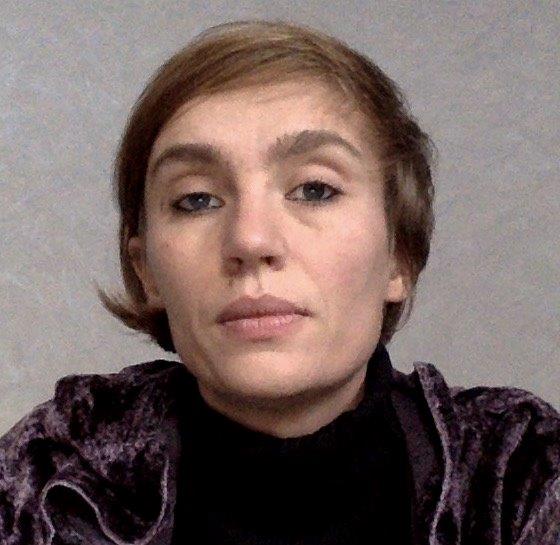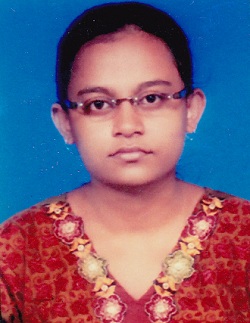|
1. Agier,
Michel, Managing the Undesirables: Refugee camps and Humanitarian
Government (London: Polity Press, 2011)
2. Ambrose, Stephen E.,
Nothing Like It in the World: The Men Who
Built the Transcontinental Railroad 1863-1869
(New
York, Simon & Schuster; 2001)

3. Anderson, Bridget, “Migration, Immigration Controls and the
Fashioning of Precarious Workers,” Work, Employment, Society,
Volume 24 (2), 2010, pp. 300–317

4. Andrijasevic, Rutvica, “The Difference Borders Make: (Il)legality,
Migration and Trafficking in Italy among Eastern European Women in
Prostitution”, in S. Ahmed, C. Castaneda, A.M. Fortier, and M.
Sheller, (eds.), Uprootings/ Regroundings: Questions of Home and
Migration (New York: Berg, 2003), pp. 251–272

5. Baubock, Rainer, (ed.), From Aliens to Citizens: Redefining the
Status of Immigrants in Europe (Aldershot, Ashgate and European
Centre Vienna, 1994, pp. 3-28)
6. Bauder, Harald, Labour Movement: How Migration Regulates Labour
Markets (New York: Oxford University Press, 2006)

7. Behal,
Rana P. and Marcel van der Linden (eds.), Coolies, Capital, and
Colonialism: Studies in Indian Labour History (Cambridge:
Cambridge University Press, 2006)
8. Betts, Alex, Louise Bloom, Josiah Kaplan, and Naohiko Omata,
Refugee Economies: Forced Displacement and Development (Oxford:
Oxford University Press, 2017)

9. Bian, David Howard,
Empire Express: Building the First
Transcontinental Railroad
(New
York, Penguin Books, 2000)
10.
Bjorn
Rother, Gaelle Pierre, Davide Lombardo, Risto Herrala, Priscilla
Toffano, Eric Roos, Greg Auclair, and Karina Manasseh, “The Economic
Impact of Conflicts and the Refugee Crisis in the Middle East and
North Africa”, IMF Staff Paper, SDN/16/08, September 2016, pp. 9-18

11.
Bloch, Alice and Sonia McKay, Living on the Margins: Undocumented
Migrants in a Global City (Bristol: Policy Press, 2017)
12.
Bloch, Alice, nando Sigona, and Roger Zetter, Sans Papiers: The
Social and Economic Lives of Young Undocumented Migrants
(London: Pluto Press, 2014)
13.
Bose,
Pradip Kumar, Refugees in West Bengal: Institutional Practices,
Contested Identities (Kolkata: Calcutta Research Group, 2002)
14.
Breman, Jan, Taming the Coolie Beast: Plantation Society and the
Colonial Order in Southeast Asia (Delhi: Oxford University
Press, 1989)

15.
Castles, Stephen and Godula Kosack, Immigrant Workers and Class
Structure in Western Europe (London: Institute of Race
Relations, 1973)

16.
Castles, Stephen and Mark J. Miller, The Age of Migration:
International Population Movements in the Modern World
(Hampshire, Basingstoke: Palgrave MacMillan, 2003), chapter 8,
“Migrants and Minorities in the Labour Force”, pp. 178-197

17.
Castles, Stephen, “Migration” in David Theo Goldberg and John
Solomos (eds.), A Companion to Racial and Ethnic Studies
(Oxford: Blackwell Publishers, 2002), pp. 570-572

18.
Chambers, Robert, “Rural Refugees in Africa: What the Eye Does not
See”, Disasters, Volume 3 (4), pp. 381-392

19.
Cole,
Robert and Senator Mark Hatfield, Uprooted Children: Early Life
of Migrant Farm Workers (Pittsburgh: University of Pittsburgh
Press, 1970)
20.
Davis, Mike, El Nino Famines: Late Victorian Holocausts and the
Making of the Third World (London: Verso, 2002)

21.
Gatrell, Peter, The Making of the Modern Refugee (Oxford:
Oxford University Press, 2015), chapter 3, “Europe Uprooted: Refugee
Crisis in the Mid-Century and ‘Durable Solutions’”, pp. 89-117

22.
Geyer, Mary (ed.), Behind the Wall: The Women of the Destitute
Asylum, Adelaide, 1852-1918, published on the occasion of the
Women’s Suffrage Centenary in South Australia, 1894-1994 (Adelaide:
Migration Museum, 1994)
23.
Hewison, Kevin and Ken Young (eds.), Transnational Migration and
Work in Asia (London: Routledge, 2006)

24.
Kara,
Siddarth, Sex Trafficking: Inside the Business of Modern Slavery
(New York: Columbia University Press, 2017)

25.
Lewis, Mary, The Boundaries of the Republic: Migrant Rights and
the Limits of Universalism in France, 1918-1940 (Redwood City,
CA: Stanford University Press, 2007)
26.
Marshall, Thomas Hamphrey,
Citizenship and Social Class: And Other Essays
(Cambridge University Press, 1950)
27.
Mezzadra, Sandro and Brett Neilson, Border as Method, or the
Multiplication of Labour(Durham: Duke University Press, 2013)

28.
Montclos, Perouse de Marc-Antoine and Peter Mwangi
Kagwanja, “Refugee Camps or Cities? Socio-economic Dynamics of the
Dadaab and Kakuma Camps in Northern Kenya”, Journal of Refugee
Studies, Volume 13 (2), 2000, pp. 205-222

29.
Ong,
Aihwa, Buddha is Hiding: Refugees, Citizenship, the New America,
California Series in Public Anthropology, 2003

30.
Papadopoulos, D., N. Stephenson, V. Tsianos,
Escape Routes. Control and Subversion in the 21st Century(London:
Pluto Press, 2008), p. 202

31.
Parker, Roy, Uprooted: The Shipment of Poor Children to Canada,
1867 to 1917 (Bristol: Policy Press at the University of
Bristol, 2008)

32.
Piore,
Michael J., Birds of Passage: Migrant Labor and Industrial
Societies (Cambridge: Cambridge University Press, 1979

33.
Rosenberg, Clifford, Policing Paris: The Origins of Modern
Immigration Control between the Wars (Ithaca, Cornell: Cornell
University Press, 2006)
34.
Samaddar, Ranabir, The Marginal Nation: Transborder Migration
from Bangladesh to West Bengal (New Delhi: Sage, 1999), chapter
35.
Samaddar, Ranabir, Migrants and the Neoliberal City
(Hyderabad: Orient Blackswan, 2018)
36.
Samaddar, Ranabir, “Borders of Labour and Refugee Economies”,
Refugee Watch, 50, December 2017, pp. 1-13
37.
Samaddar, Ranabir, “The Ecological Migrant in the Postcolonial Time”
in Andrew Baldwin and Giovanni Bettini (eds.), Life Adrift:
Climate Change, Migration, Critique (London: Rowman and
Littlefield, 2017), pp. 171-193
38.
Samaddar, Ranabir, “Returning to the Histories of the Late 19th
and Early 20thCentury Immigration”, Economic and
Political Weekly, Volume 50 (2), 10 January 2015, pp.

39.
Sassen, Saskia, Expulsions: Brutality and Complexity in the
Global Economy (Harvard: Belknap Press, 2014)

40.
Taylor, Edward, J., Mateusz J. Filipski, Mohamed Alloush, Anubhab
Gupta, Ruben Irvin Rojas Valdes, and Ernesto Gonzalez-Estrada,
“Economic Impact of Refugees”, PNAS (Proceedings of the National
Academy of Sciences of the United States of America), Volume 113
(27), 2016, pp. 7449-7453

41.
Tilly, Charles, “Transplanted Networks”
in Virginia Yans-McLaughlin, ed., Immigration Reconsidered.
History, Sociology, and Politics (New York: Oxford University
Press, 1990), chapter 3, pp.
79-95

42.
Torpey, John, The Invention of Passport: Surveillance,
Citizenship, and the State (Cambridge: Cambridge University
Press, 1999)

43.
The State of the World’s Midwifery, 2011: Delivering
Health, Saving Lives,
United Nations Population Fund, New York, 2011
44.
“An
Economic Take on the Refugee Crisis: A Macroeconomic Assessment for
the EU”, European Commission, Directorate-General for Economic and
Financial Affairs, Institutional Paper 033, 2016

45.
“Syrian Refugees in Turkish Garment Supply Chains”,
Report by Business and Human Rights Resource Centre, February 2016

46.
“Syrian Refugees Working in Turkey’s garment Sector”,
Report by Ethical Trading Initiative

47.
Report by TAMPEP (European Network for HIV/STI
Prevention and Health Promotion among Migrant Sex Workers), “Sex
Work in Europe: A mapping of the Prostitution Scene in 25 European
Countries” (Amsterdam: Tampep International Foundation, 2009)

International Migration Review
48.
Esser, Hurmut, “Does the
‘New’ Immigration Require a ‘New’ Theory of Intergenerational
Integration?,” International Migration Review, Volume 38(2),
2004

49.
Field, Serge, “Labour
Force Trends and Immigration in Europe,” International Migration
Review, Volume 39 (3), 2005, pp 637-662

50.
Freeman, Gary,
“Immigrant Incorporation in Western Economies,” International
Migration Review, Volume 38(2), 2004, pp 945-969

51.
Guang, Lei, “The State
Connection in China’s Rural-Urban Migration,” International
Migration Review, Volume 39 (2), 2005, pp 354-380

52.
Guarnizo, Luis Eduardo,
“The Economics of Transnational Living,” International Migration
Review, Volume 37(2), 2003, pp 666-699

53.
Han, Shin-Kap, “Ashore
on the Land of Joiners: Intergenerational Social incorporation of
Immigrants”, International Migration Review, Volume 38 (1),
2004

54.
Krissman, Fred, “Sin
Coyote Ni Patron: Why the ‘Migrant Network’ Fails to Explain
International Migration,” International Migration Review,
Volume 39(1), 2005, pp 4-44

55.
Lewin-Epstein, Noah,
Moshe Semyonov, Irena Kogan and Richard Awanner, “Institutional
Structure and Immigrant Integration: A Comparative Study of
Immigrants’ Labour Market Attainment in Canada and Israel,”
International Migration Review, Volume 37(2), 2003, pp 389-420

56.
Liang, Zai and Toni
Zhang, “Emigration, Housing Conditions and Social Stratification in
China,” International Migration Review, Volume 38(1), 2004,
pp 686-708

57.
Logan, John R, Richard D
Alba and Brian J Stults, “Enclaves and Entrepreneurs: Assessing the
Payoff for Immigrants and Minorities,” International Migration
Review, Volume 37(2), 2003, pp 344-388

58.
Mata, Fernando and Ravi
Pendakur, “Immigration, Labor Force Integration and the Pursuit of
Self-Employment,” International Migration Review, Volume
33(2), 1999, pp 378- 403 [D]

59.
Montgomery, J. Randall,
“Components of Refugee Adaptation,” International Migration
Review, Volume 30(3), 1996, pp 679 -702

60.
Parrado, Emilio A and
Marcela Cerruti, “Labour migration between Developing countries: the
case of Paraguay and Argentina,” International Migration Review,
Volume 37(1), 2003, pp 101-132

61.
Pessar, Patricia and
Sarah J Mahler, “Transnational Migration: Bringing Gender In,”
International Migration Review, Volume 37(2), 2003, pp 812-846

62.
Pieke, Frank N and Mette
Thuno “Institutionalising, Recent Rural Emigration from China to
Europe: New Transnational Villages in Fujian,” International
Migration Review, Volume 39 (2), 2005, pp 485-514

63. Semyonov, Moshe & Anastasia Gorodzeisky, “Labour Migration,
Remittances and Household Income: A Comparison between Filipino and
Filipina Overseas Workers,” International Migration Review,
Volume 39 (1), 2005, pp 45-68
 |




